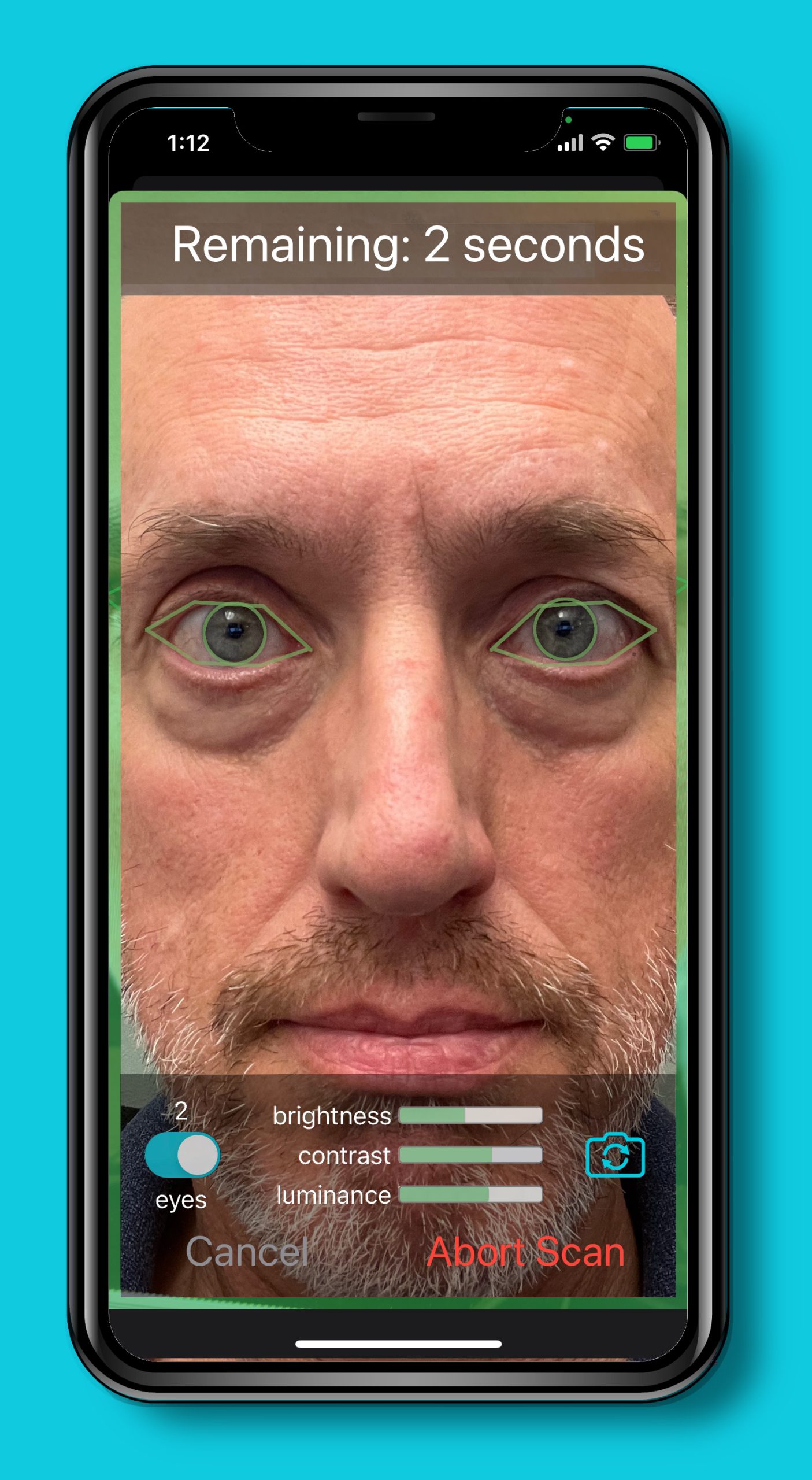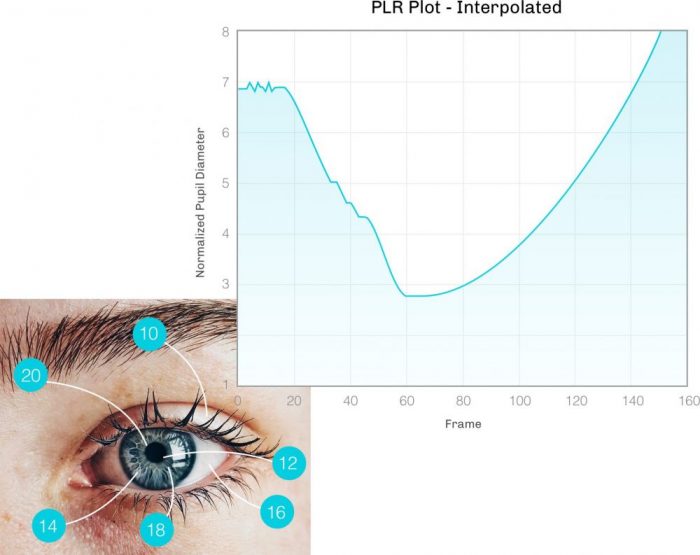The Pupil Check
Solution
Step 1: Eye scan with responsive guidance for high-quality data capture

Our app induces and captures the involuntary pupillary reflex to a light or sound stimulus, recording a seven-second video of one or both of the constriction and subsequent dilation of the pupil.
A sophisticated guidance system detects potentially adverse recording conditions (reflections, positioning, lighting) and directs the user to optimize them before starting the scan.
This ensures capture of the highest quality pupillary data in the video, which is then presented in an easy-to-understand display with analysis.
Step 2: Video analysis and PLR calculation
Pupillary diameter measurements are taken from each frame of the video and plotted over time to create the PLR vector. A graph of the PLR shows the pupil’s contractive reaction to a light stimulus, followed by a redilation phase.
Pupillary diameter varies as a function of time, and temporal measurements can be used to extract information about a patient’s brain state. Studies have shown the PLR to be of particular use in determining the presence of psychotropic substances.
Pupil Check technology can be applied to for other applications, such as concussions, aphantasia, Alzheimer’s disease, and more.

